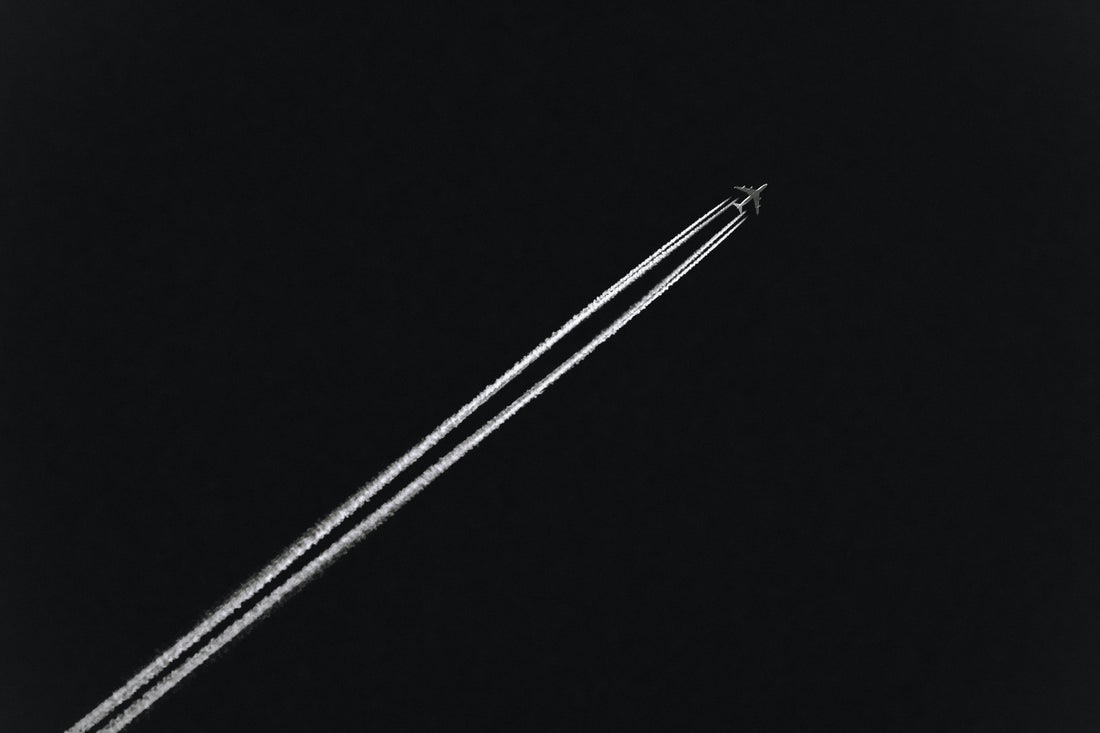
Understanding Contrails: The Science Behind What You See in the Sky
In recent years, the term "chemtrails" has gained traction in public discourse, often causing confusion and concern about the trails left by aircraft in the sky. However, it’s crucial to distinguish between contrails (condensation trails) and chemtrails. This blog aims to explain what contrails are, how they form, their environmental impact, and why they are a natural part of air travel.
What Are Contrails?
Contrails are visible trails of condensed water vapor that form behind aircraft flying at high altitudes. When aircraft engines burn fuel, they emit exhaust gases, including water vapor. At cruising altitudes, which are typically between 25,000 and 40,000 feet, the air is very cold, often below -40°F (-40°C). When the hot, humid air from the engine exhaust mixes with the cold air, the water vapor condenses into tiny water droplets or ice crystals, forming the visible white streaks we see in the sky.
How Contrails Form
-
Engine Exhaust: The process begins with the combustion of jet fuel in the engines. This combustion generates water vapor, carbon dioxide, and other gases.
-
Temperature and Humidity: When the aircraft ascends to cruising altitude, the temperature is extremely low, and if the relative humidity is high enough, the water vapor in the exhaust condenses into liquid water droplets or ice crystals.
-
Visibility: The resulting contrails can last for varying amounts of time depending on the atmospheric conditions. If the air is very humid, the contrail can persist for a long time and spread out, contributing to cirrus cloud formations. In drier conditions, they may dissipate quickly.
Types of Contrails
Contrails can be categorized into two main types:
-
Short-lived Contrails: These dissipate quickly, usually within a few seconds to a couple of minutes. They form when the humidity is low, and the environmental conditions do not support their persistence.
-
Persistent Contrails: These can last for hours and may spread to form cirrus clouds. They typically form in conditions where the upper atmosphere is sufficiently humid, allowing the ice crystals in the contrail to remain suspended in the air.
The Environmental Impact of Contrails
Contrails can have both positive and negative effects on the environment:
-
Climate Influence: Persistent contrails contribute to cloud cover, which can trap heat and influence local weather patterns. They can have a warming effect on the Earth’s surface by reflecting heat back down, a phenomenon that is part of ongoing research in climate science.
-
Aerosol Formation: Contrails can serve as nuclei for ice crystal formation, leading to the development of cirrus clouds. While these clouds can have warming effects, they can also play a role in regulating precipitation patterns.
The Misconceptions: Contrails vs. Chemtrails
The concept of "chemtrails" suggests that some trails are part of a covert government program to spray harmful substances into the atmosphere for nefarious purposes. This conspiracy theory lacks scientific support and is widely debunked by experts in aviation and atmospheric science.
Here’s why contrails are not chemtrails:
-
Scientific Evidence: Extensive research and scientific studies have shown that contrails are simply water vapor. No credible evidence supports the existence of chemtrails.
-
Visibility and Composition: Contrails are composed primarily of water vapor and are not linked to any harmful chemicals or substances.
-
Transparency and Regulation: The aviation industry is heavily regulated, and any potential aerial spraying would be subject to rigorous oversight and public scrutiny. There is no documented instance of such activities occurring.
The Role of Aviation in Climate Change
While contrails contribute to climate change, it’s essential to view air travel in the broader context of its impact on the environment. The aviation industry is actively working to reduce its carbon footprint through various initiatives, including:
-
Fuel Efficiency: Advances in aircraft technology aim to make engines more fuel-efficient, thereby reducing emissions.
-
Alternative Fuels: Research into sustainable aviation fuels (SAFs) aims to decrease reliance on fossil fuels and reduce greenhouse gas emissions.
-
Operational Improvements: Airlines are optimizing flight routes and reducing weight on planes to enhance efficiency.
Conclusion
Contrails are a natural byproduct of high-altitude flight and are fundamentally different from the unfounded concept of chemtrails. Understanding the science behind contrails helps demystify their formation and dispels common myths. As we continue to navigate the challenges of climate change, it’s crucial to focus on evidence-based information while recognizing the aviation industry's efforts to improve sustainability.
So the next time you look up and see those white streaks across the sky, remember: they are just contrails, a testament to the engineering marvel of modern aviation and the atmospheric conditions that allow them to form. ✈️☁️











